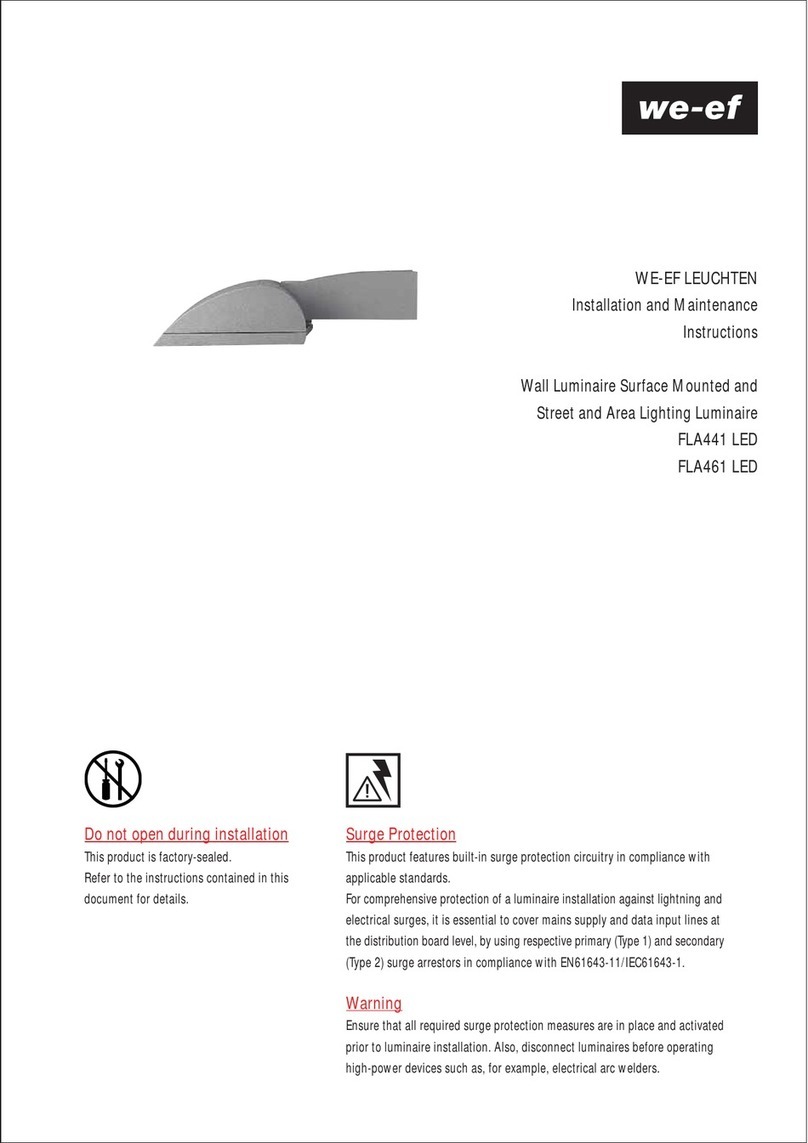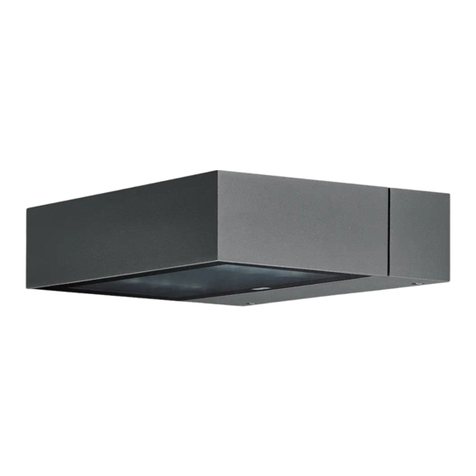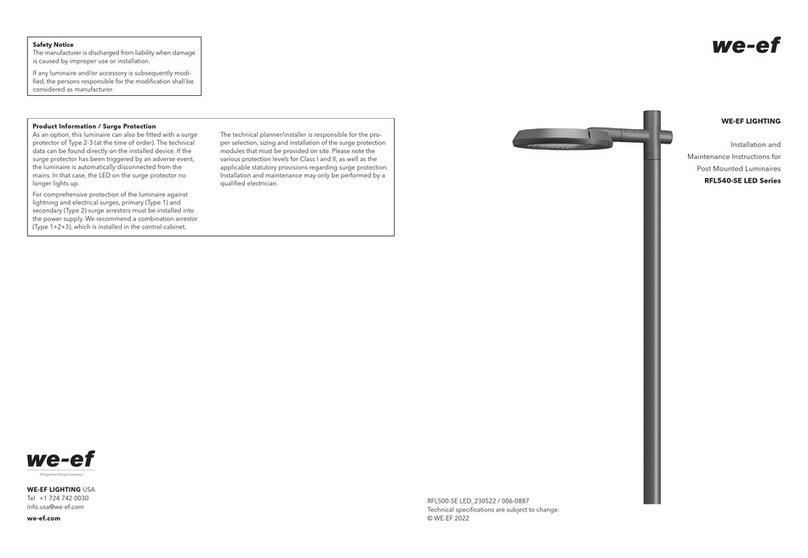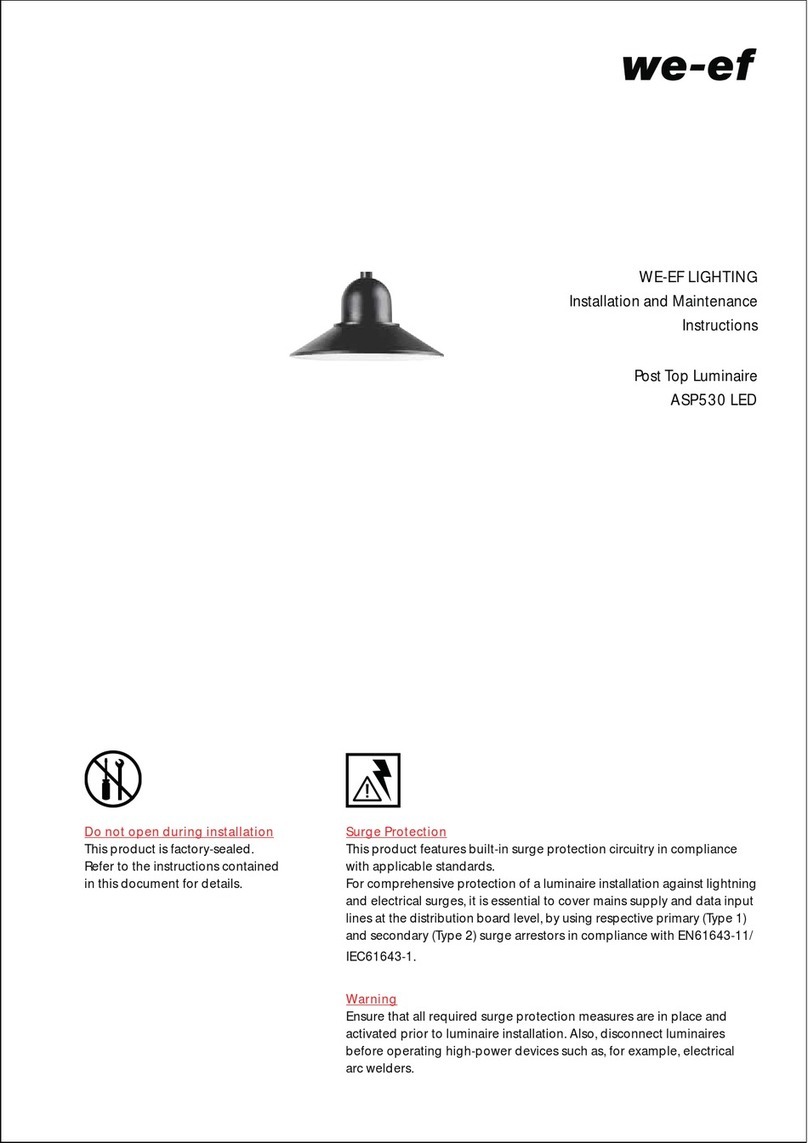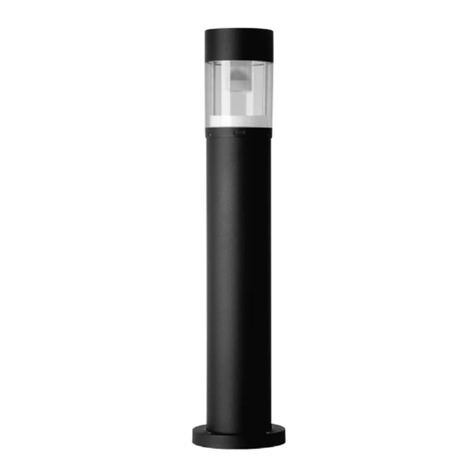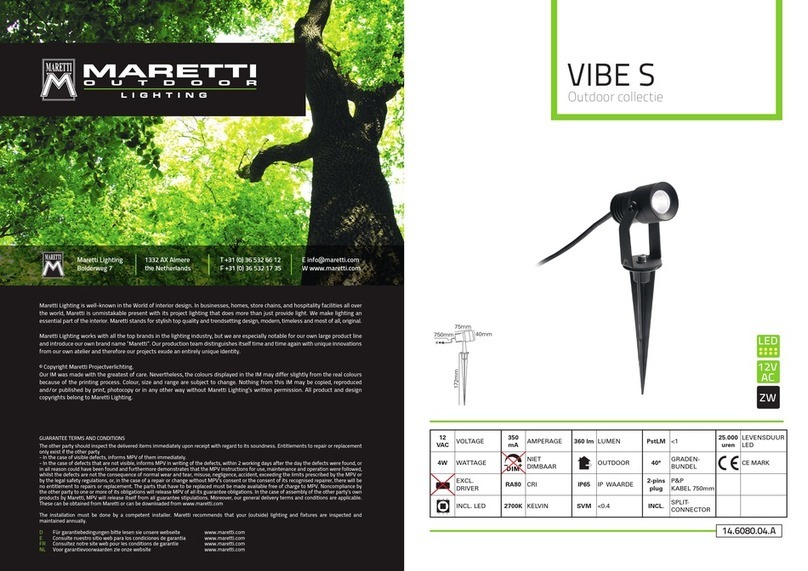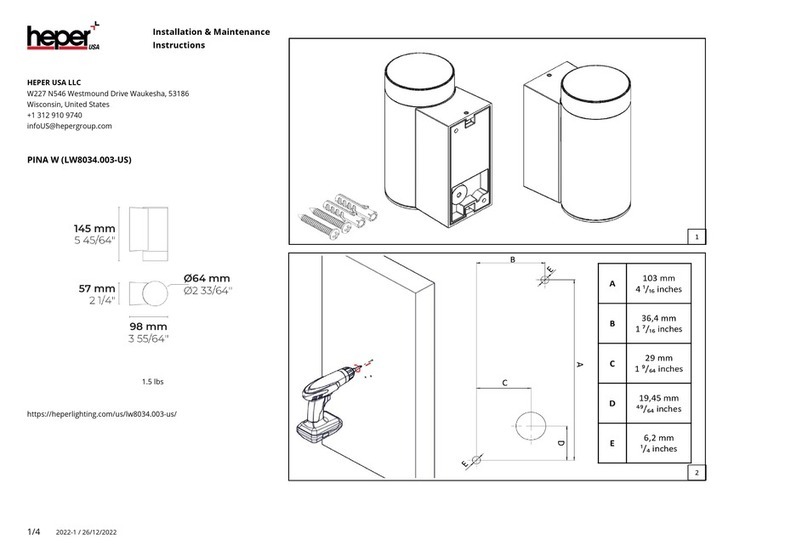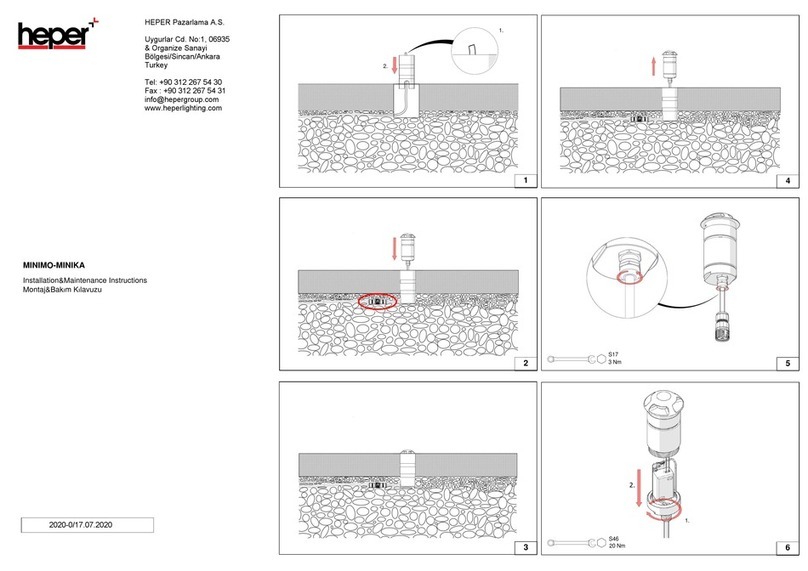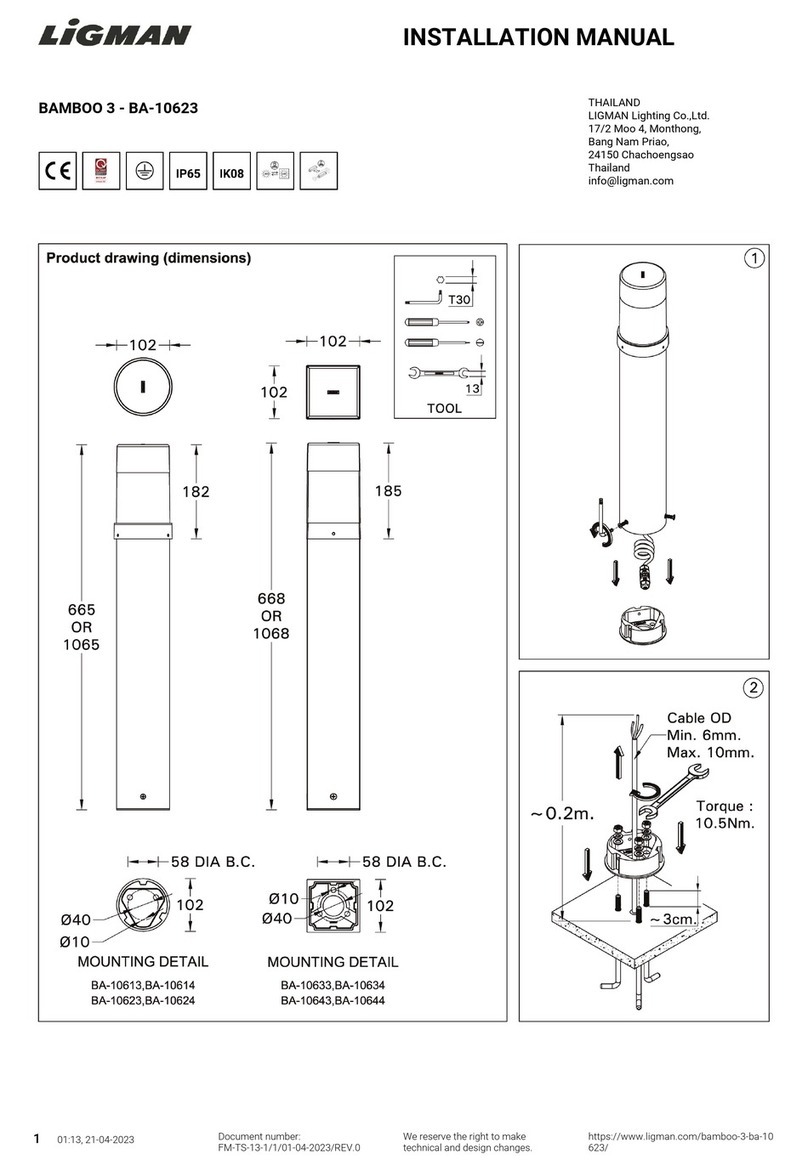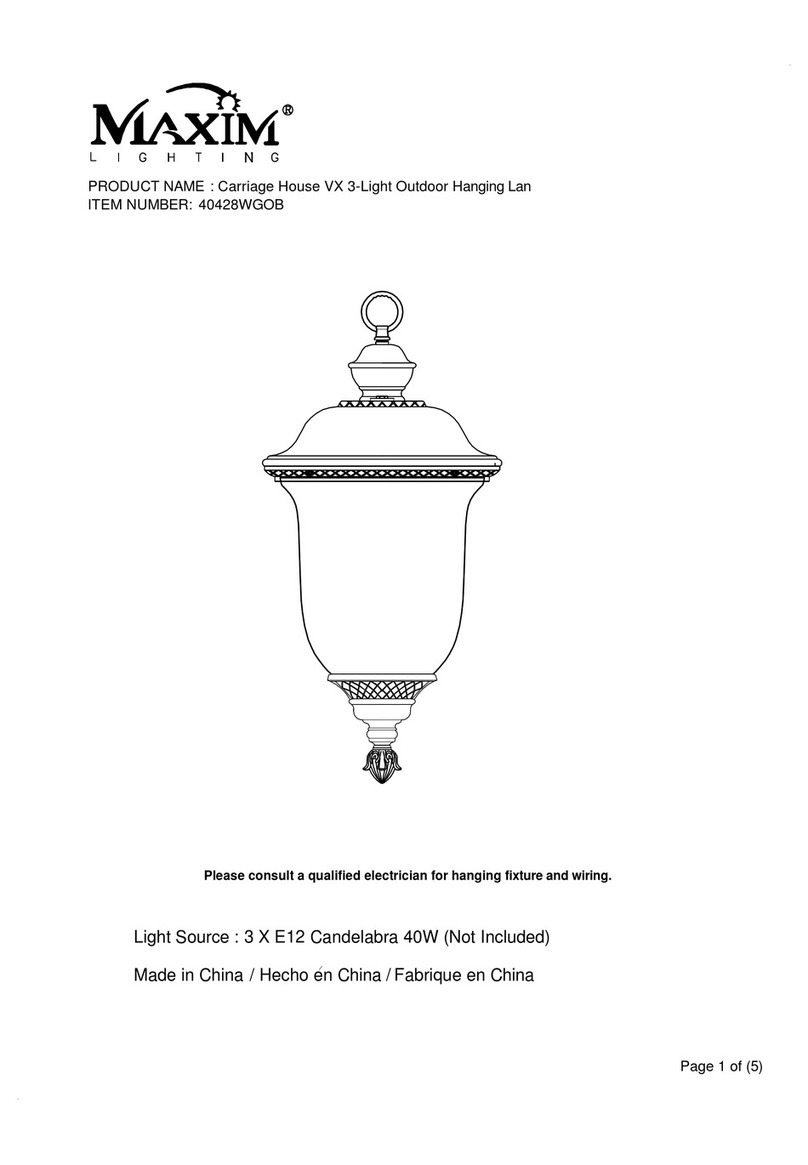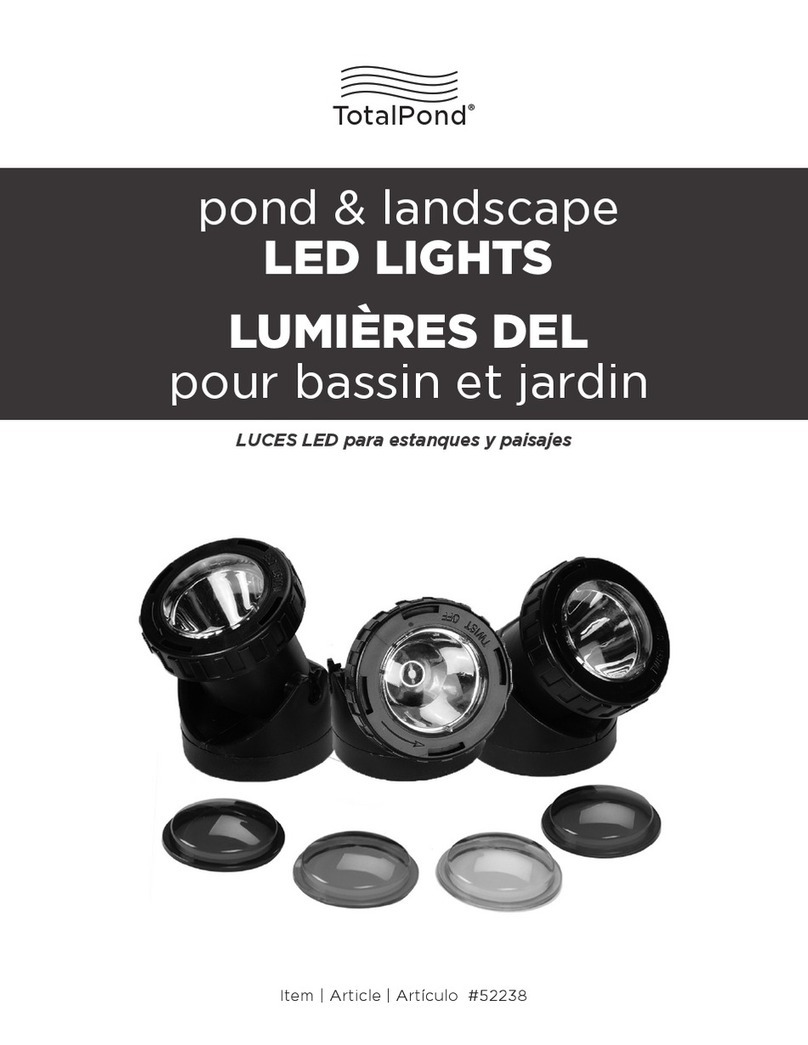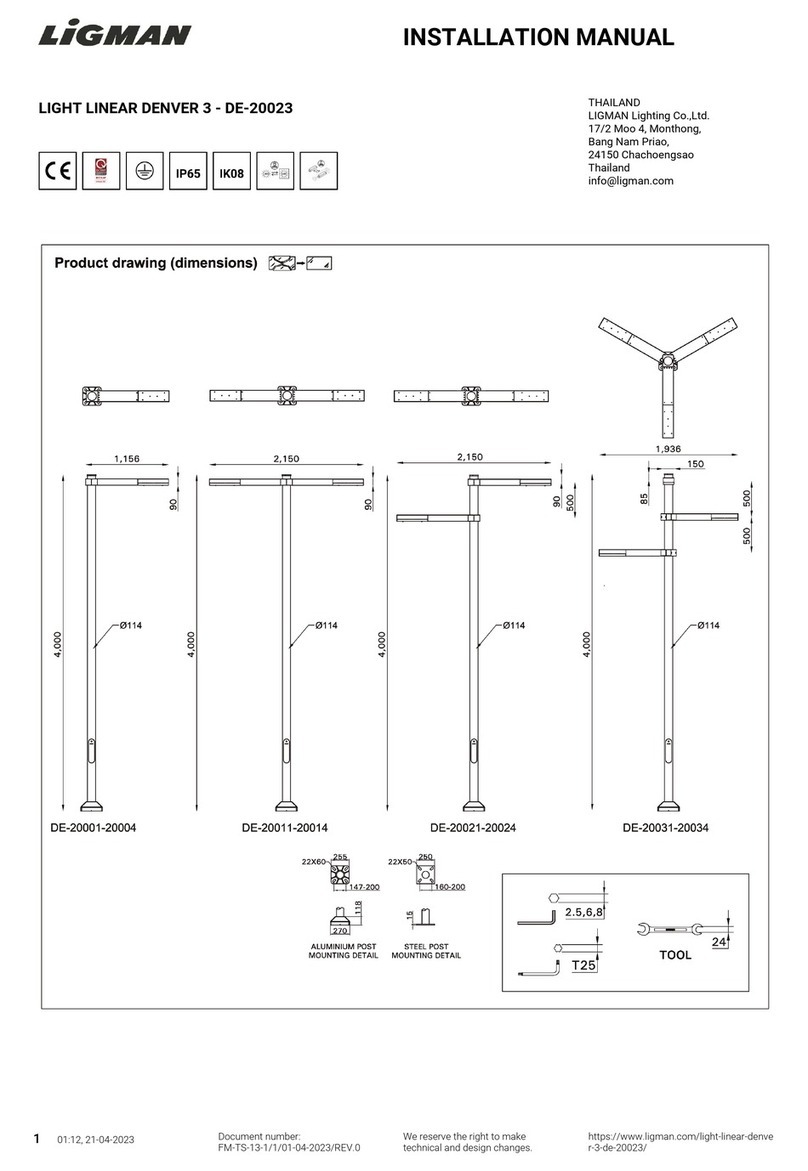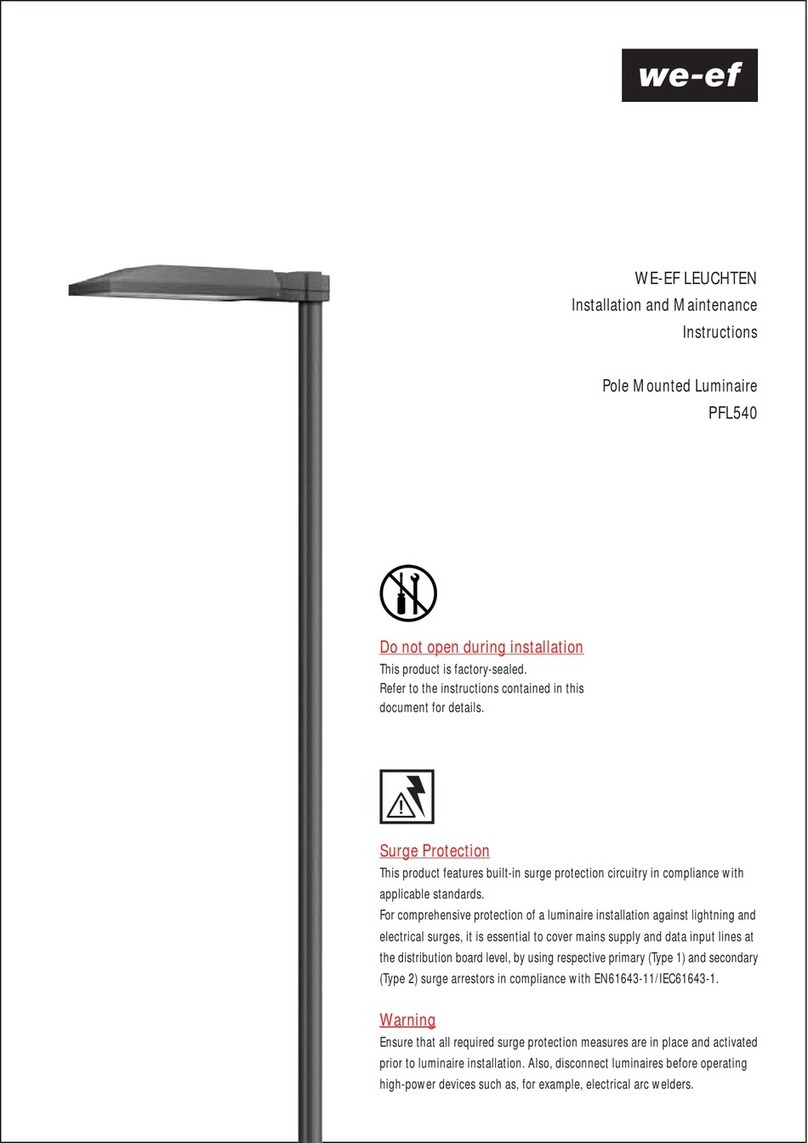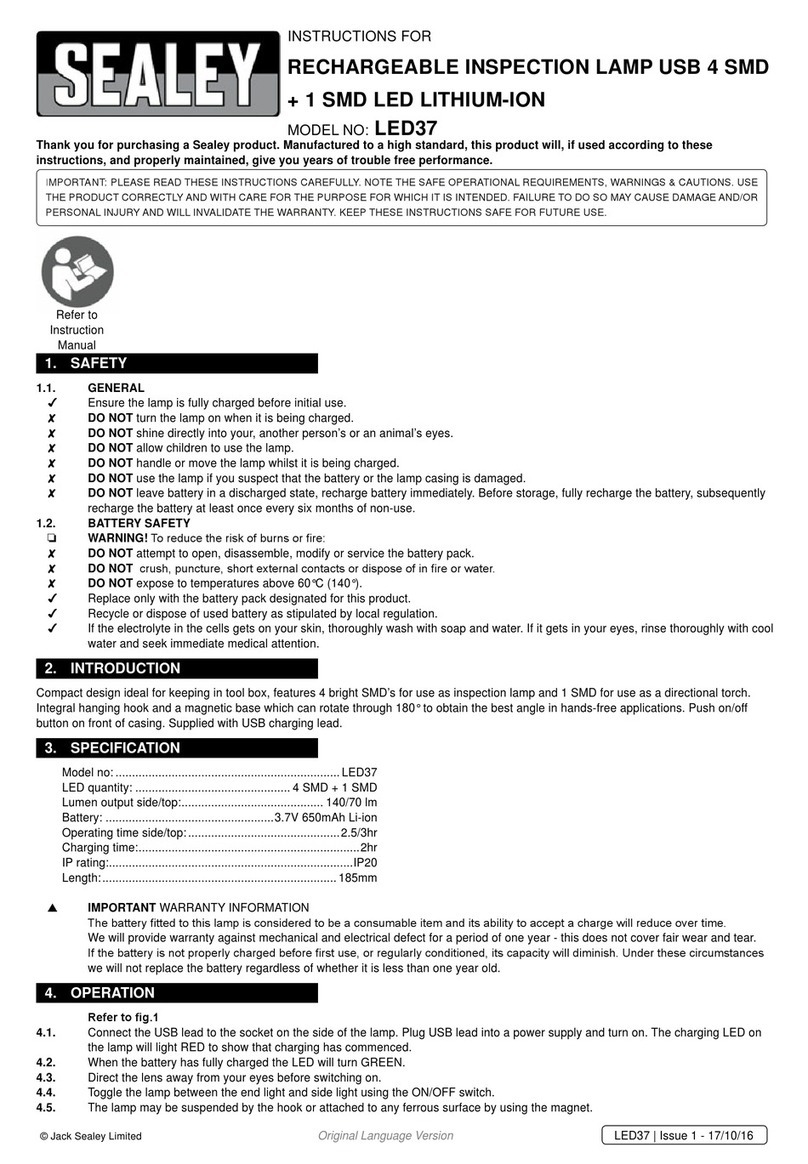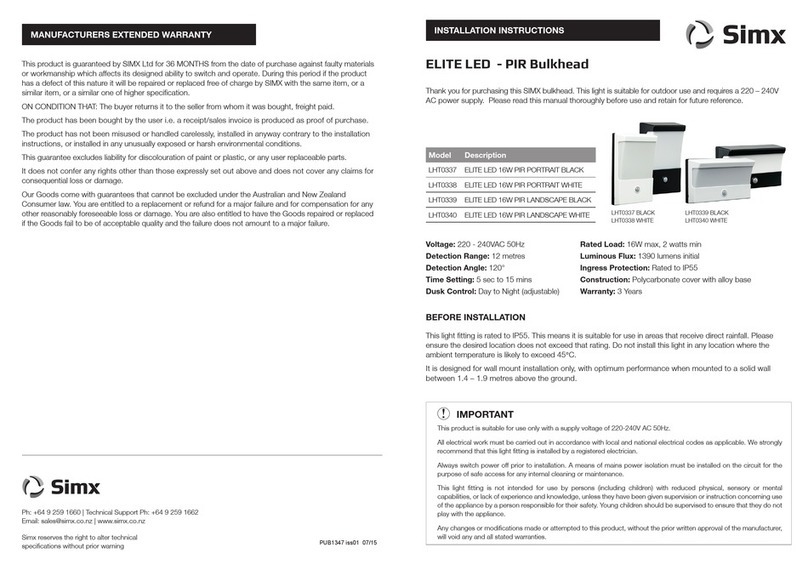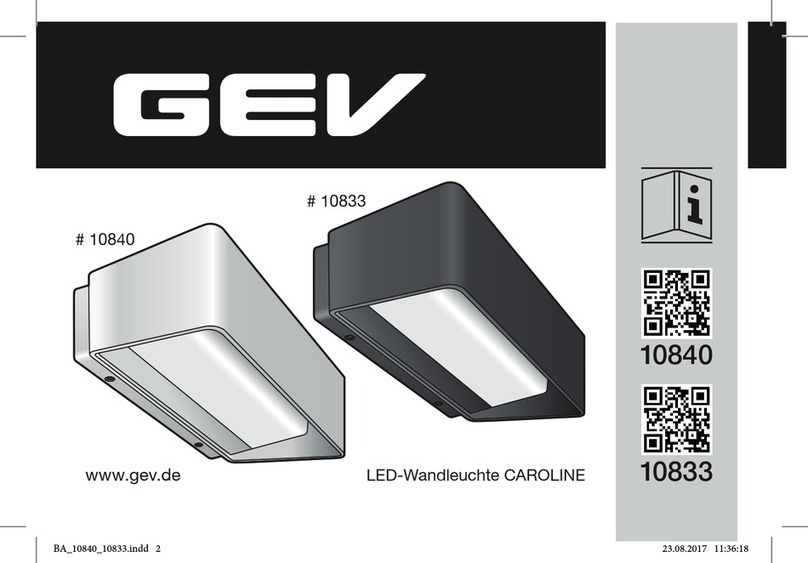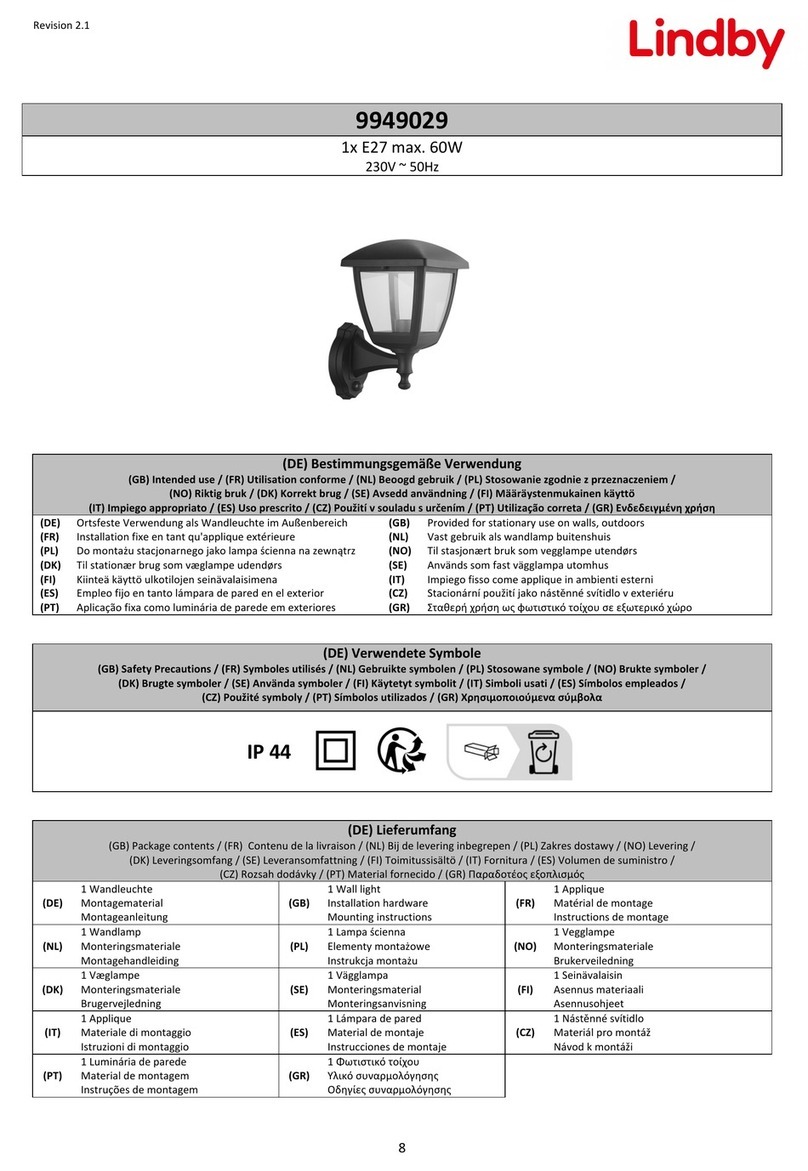2
-Class I: For a lagging PE connection, loop the PE
conductor around the live conductors (fig. 2).
If a violent force is exerted on the conductor the
PE conductor will be the last cable pulled out of the
terminal.
- Insert the cable into the gland nut and fix the cables
to the conductor support of the splice (fig. 3).
Connect phase L1 to 1, phase L2 to 2, neutral con-
ductor (N) to 3 and the earthing to the correspond-
ingly marked contacts of the terminal clamp.
Cut off the wires with a diagonal cutter, flush with
the splice (fig. 4).
Luminaires with ECO STEP DIM®–BASIC are connected
to 2 of phase L2.
If the luminaire is controlled via two additional lines,
for example ECO STEP DIM®–DYNAMIC, 1-10V or DALI,
for class II, these lines get connected to clamps 2 and
4 and for class I the lines get connected to clamps 2
and 3 of the cable connector.
Compare the local voltage and frequency with date
mentioned on the label of the luminaire.
- Screw the gland nut together, tightening to a torque
of 10 Nm (fig. 5).
- As a guide for setting the gland nut, numerals I, II
and III can be found on the connection (fig. 6).
In the case of thin cables, the nut can generally be
tightened further than with thicker cables. The con-
tact point is made when the nut is screwed on and
the contact point lies just in front of the numeral I.
The gland nut has to be screwed on tightly so that it
cannot be opened again by hand.
-Ashows the setting Ifor a cable diameter of
12-14 mm,
Bshows the setting III for a cable diameter of
9-10 mm.
-Schutzklasse I: Für die Realisierung eines nach-
eilenden PE-Anschlusses ist der PE-Leiter um die
spannungsführenden Leiter zu schlingen (Abb. 2).
Bei einem gewaltsamen Zug auf die Leitung wird der
PE-Leiter dadurch als Letztes aus der Klemme gezogen.
- Führen Sie die Leitung in die Überwurfmutter ein und
fixieren Sie die Adern in der Leiteraufnahme des
Spleißbodies (Abb. 3). Hierbei Phase L1 an 1, Phase
L2 an 2, Nulleiter N an 3 und bei Schutzklasse I
Schutzleiteranschluss an die entsprechend
markierten Kontakte anschließen. Schneiden Sie
die Adern mit einem Seitenschneider bündig am
Spleißbody ab (Abb. 4)
Bei Leuchten mit ECO STEP DIM®–BASIC wird die
Steuerphase L2 an 2 angeschlossen.
Wird die Leuchte über zwei zusätzliche Leitungen ge-
steuert, z.B. ECO STEP DIM®–DYNAMIC, 1-10V oder
DALI, werden diese Steuerleitungen bei SKII auf die
Klemmen 2 und 4, bei SKI auf die Klemmen 2 und 3
des Leitungsverbinders geklemmt.
Vergleichen Sie die örtliche Spannung und Frequenz
mit den Daten auf dem Leistungsschild.
- Verschrauben Sie die Überwurfmutter mit einem
Anzugsdrehmoment von 10 Nm (Abb. 5).
- Als Orientierung zur Anschraubweite der Überwurf-
mutter finden Sie auf dem Anschluss die Ziffern I, II
und III (Abb. 6).
Bei dünnen Leitungen lässt sich die Mutter tenden-
ziell weiter anschrauben als bei dicken Leitungen. In
jedem Fall muss beim Anschrauben der Mutter der
Kontaktierungspunkt überwunden werden und der
liegt noch vor der Ziffer I. Die Überwurfmutter muss
auch so fest angeschraubt werden, dass sie sich von
Hand nicht wieder öffnen lässt.
-Azeigt die Anschraubweite Ibei einem Leitungs-
durchmesser von 12-14 mm,
Bzeigt die Anschraubweite III bei einem Leitungs-
durchmesser von 9-10 mm.






